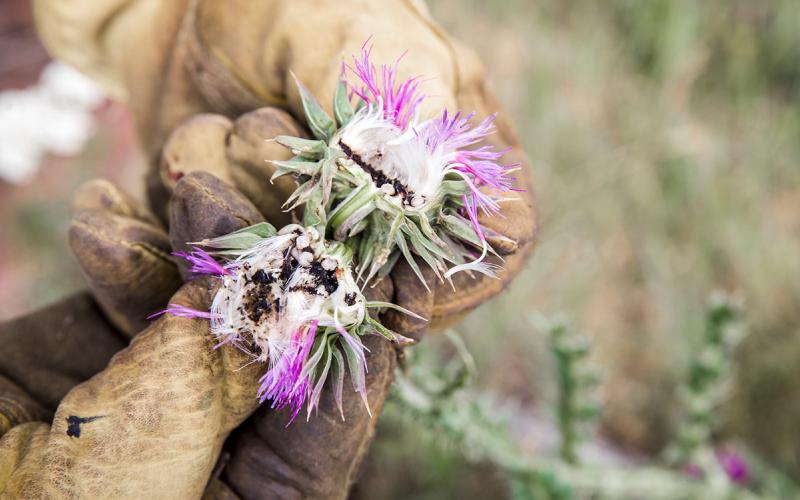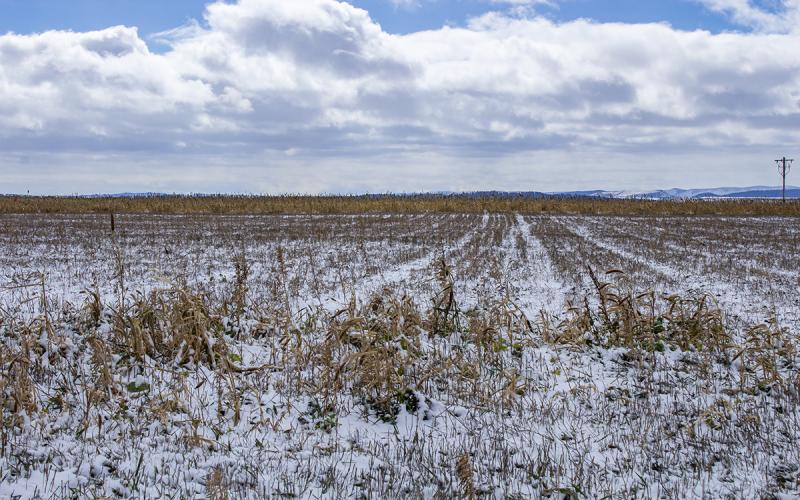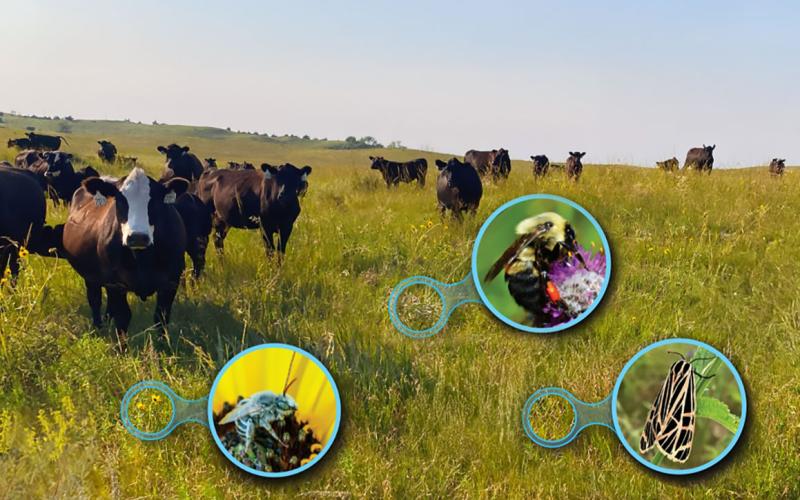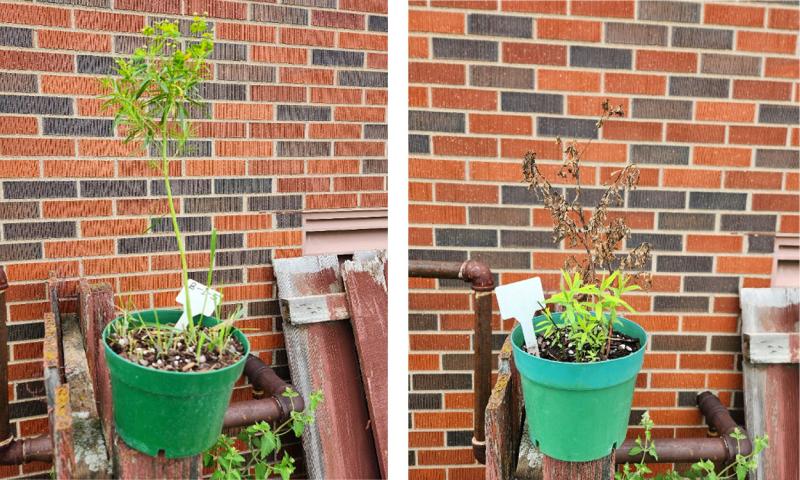
Written collaboratively by Eric Jones, Philip Rozeboom, Jill Alms, and David Vos.
The SDSU Extension Weed Science Project is currently conducting a potted plant study looking at various herbicide treatments to manage leafy spurge. One of the treatments was 2,4-D ester applied at 2 quarts (2 pounds acid equivalent) per-acre at an output of 20 gallons per acre.
Leafy spurge plants were treated at the yellow bract stage. 2,4-D ester applied at this rate has been documented to effectively manage; however, many of the sources that state this treatment is effective also state that a followup treatment may be needed in the fall.
Twenty-one days after treating the leafy spurge plants with 2,4-D ester (2 quarts per-acre), new regrowth was evident (Figure 1).
What does this mean for leafy spurge management?
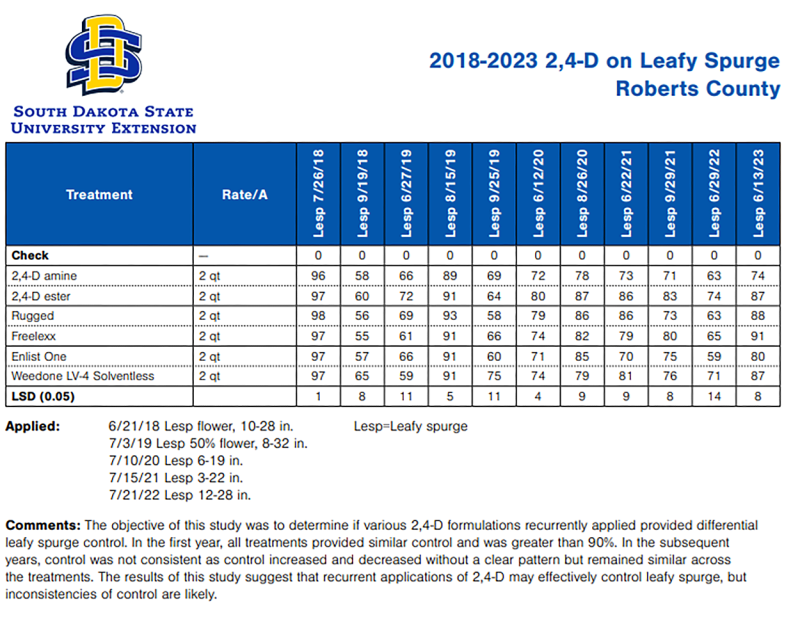
Leafy spurge management will likely require management tactics to be implemented in the spring and fall to be effective. While 2,4-D could be applied in the spring and fall, previous research from SDSU suggests that leafy spurge treated with 2,4-D (regardless of formulation) in the spring and fall is not effective (Figure 2). Other herbicides should be used in tandem with non-chemical tactics (grazing, fertilizing pastures, and releasing leafy spurge beetles) to effectively manage leafy spurge.
Utilizing various tactics will help manage leafy spurge and other weeds present in the infested area better than relying on one tactic alone. A complete list of herbicides to manage leafy spurge (and other weeds) can be found in the most-recent SDSU Extension Noxious Weed Control Guide and Pasture and Rangeland Weed Control Guide. Weed management data from field studies can also be found in our Noxious and Pasture Weed Plot Data Report to determine the most-effective products for leafy spurge and other weed species in your area.
